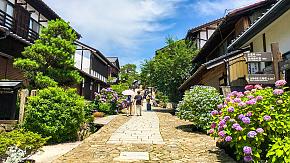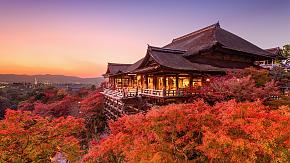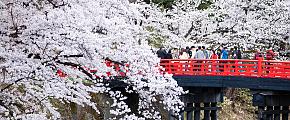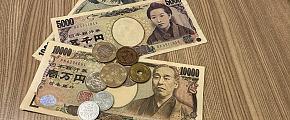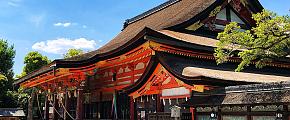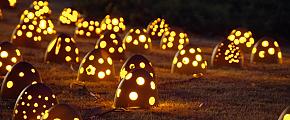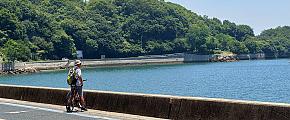A Guide to Japan's Hiking
Japan is an excellent destination for outdoor sports, especially hiking, where you can immerse yourself in stunning natural scenery while relaxing your body. Whether it is a long trek lasting over a week or a shorter hike for a day or two, you can find healing in serene mountain lakes or along ancient forest paths - all easily accessible during your Japan tour. With this travel guide, discover the charm of hiking in Japan with every step you take!
Japan Hiking Map: Where to Hike in Japan
The mountainous region of Nagano, nestled in the Japan Alps - often referred to as the roof of Japan - and Hokkaido, known for its numerous national parks, offer stunning hiking opportunities. From the serene lakeside paths around Lake Kawaguchi to the ancient pilgrimage trails of Kumano Kodo winding through lush forests, follow the Japan hiking map below to discover your ideal hiking destinations.
 Japan Hiking Map
Japan Hiking Map
Best Time to Go Hiking in Japan
Spring and autumn are the best times to go hiking in Japan, as the weather is sunny and the temperatures are mild - ideal for outdoor activities. This is especially true for hikers who want to experience the beauty of the cherry blossoms in spring or the vibrant colors of the autumn leaves along the path.
However, the best time to go hiking depends on your personal preferences and the specific destination. For example, the forests around Kumano Kodo can be some of the wettest areas in Japan during the summer, creating slippery trails that can be challenging for inexperienced hikers.
If you're planning to climb Mount Fuji, the summer months of July to September are the only possible time for hiking. Don't worry - below are some carefully selected trails in Japan, complete with information on the best times to hike and levels of difficulty. Alternatively, you can let Odynovo know your requirements and help you plan your ideal itinerary.
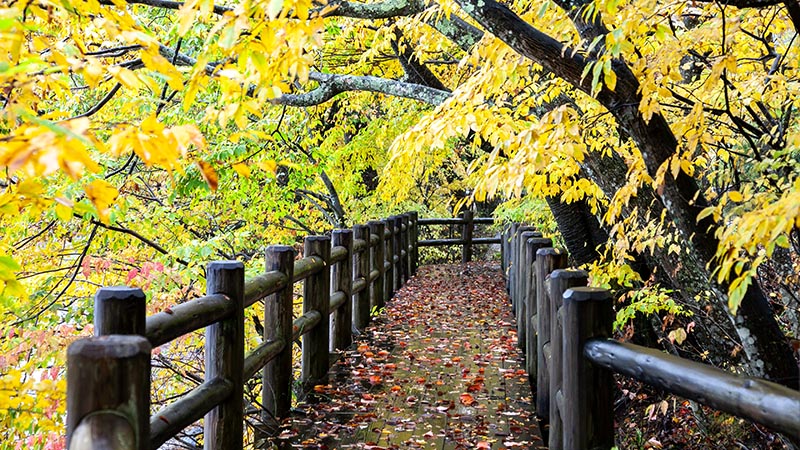 Kumano Kodo in Autumn
Kumano Kodo in Autumn
Best Hikes in Japan
Mount Fuji - Pilgrimage Trail Around Tokyo
- Route: Yoshida, Fujinomiya, Gotemba & Subashiri Trail
- Distance: About 20km (1 to 2 days)
- Difficulty: Challenging
- Season: July to Mid-September
A symbol of Japan, Mt. Fuji embodies both natural beauty and a deep sense of awe. You may have seen its iconic silhouette or relaxed in a hot spring at its base, but the most profound experience is to scale its heights yourself.
The relatively short Yoshida and Fujinomiya trails are ideal for first-time climbers. Both trails have frequent rest stops, mountain huts, and first aid stations, making them suitable for beginners or families looking for a safe adventure.
Reaching the summit through your own determination is a rewarding experience and the views from the top are unforgettable. If you're an experienced hiker, consider challenging yourself with the Gotemba Trail, which is longer and has more elevation gain.
During the summer, the sun rises on Mt. Fuji between 3:30 and 4:30 am. Plan your start time based on your ideal hiking trail to get the ultimate reward from the summit.
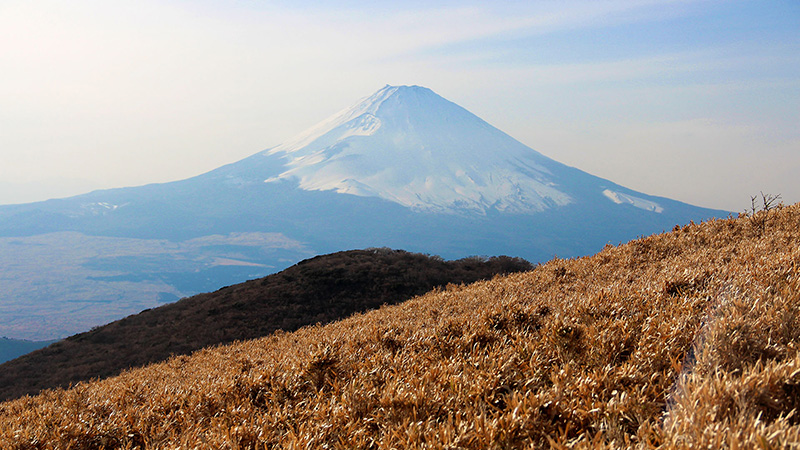 Mount Fuji
Mount Fuji
Nakasendo - Historic Samurai Trail
- Route: From Magome to Tsumago
- Distance: About 7km (1 day)
- Difficulty: Easy
- Season: Year-round (best for spring & autumn)
Also known as the Central Mountain Route, the Nakasendo once connected ancient Tokyo and Kyoto. It's one of Japan's best hikes for experiencing its historic charm, weaving through rural villages and lush forests.
Follow the winding cobblestone paths deep into the forest, with moss-covered rocks, flowing streams, and towering mountains. Along the way, you'll pass through wooden old towns that feel frozen in time, capturing the essence of Japan's history.For a deeper experience, consider slowing your pace or even staying overnight on one of these historic streets. Rest in a traditional ryokan, where tranquility can transport you back to the Edo Period.
Enjoy a bowl of soba or a cup of tea before continuing along the stone-paved paths, which are lined with waterfalls and natural beauty at every turn. Nakasendo is more than just a scenic hike - it's a journey through Japan's history and culture.
Kumano Kodo - Sacred Sites & Pilgrimage Routes
- Route: Nakahechi, Kohechi, Ohechi, Iseji, Kiiji & Omine Okugake Route
- Distance: About 38km ( 2 or 3 days)
- Difficulty: From moderate to challenging
- Season: Year-round (best for autumn)
Kumano Kodo is a historic pilgrimage network weaving through the lush Kii Mountain Range. Listed as a UNESCO World Heritage, where among dense forests and sacred shrines, nature, and religious heritage have coexisted harmoniously for centuries.
It was once the path taken by the royal family and nobility traveling from Kyoto to pay homage, offering one of the most profound ways to experience Japan's Shinto and Buddhist traditions.
Most trails wind deep into dense forests, where towering ancient trees line the path, largely unchanged from thousands of years ago.
The popular Nakahechi trail is relatively flat and has modest elevation, making it ideal for novice hikers wanting to experience the highlights of Kumano Kodo within a limited time.
Walking the Kumano Kodo, passing small shrines, and immersing yourself in nature offers a sense of spiritual renewal and inspiration.
Yakushima - Forest Trails With Japan's Oldest Tree
- Route: From Yodogawa to Arakawa
- Distance: About 10km (1 day)
- Difficulty: From moderate to challenging
- Season: Year-round (best for spring & autumn)
From beaches to mountains, Yakushima's diverse wildlife and lush landscapes are truly awe-inspiring. Stepping foot on this mysterious island is like entering a hidden world beyond reality.
The trails here are mostly flat, making them accessible to hikers of all ages. Walking through the ancient forest paths, you'll feel like you've stepped into a fairytale realm, surrounded by towering cedars, some over 1,000 years old. Moss covers the rocks and forest floor, creating a soft green velvet carpet underfoot.
For photographers and experienced trekkers, Yakushima's magnificent waterfalls are a must. High-altitude trails and abundant rainfall have created dramatic waterfalls cascading down cliffs. One such waterfall plunges from a height of 88 meters, where you can approach the pool to feel the refreshing spray up close.
Yakushima offers both tranquillity and mystery in an ancient forest setting. For a journey into the heart of nature, be sure to add Yakushima to your itinerary!
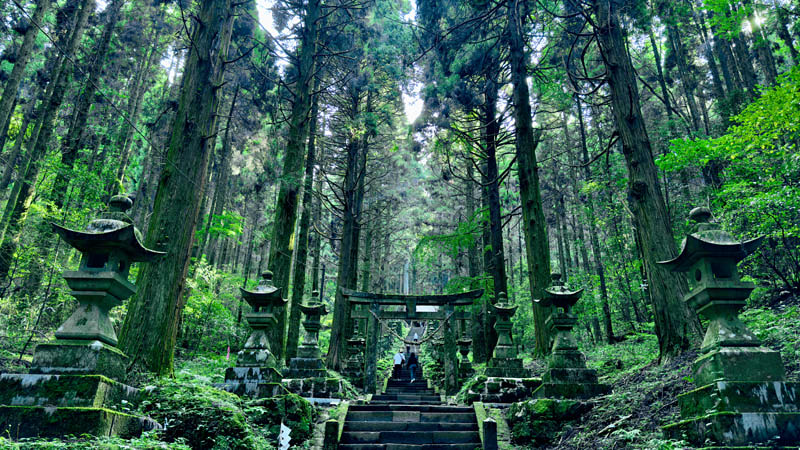 Lush Forest in Yakushima
Lush Forest in Yakushima
Rebun Island - Floating Island Hike With Flowers
- Route: Momo Iwa Trail, Cape Gorota Course & 8-Hour Course
- Distance: From 9km to 30km (1 day)
- Difficulty: Moderate
- Season: Year-round (best for summer)
Rebun Island, located in northernmost Hokkaido, Japan, is renowned as the "floating island of flowers" thanks to its vibrant meadows and colorful blooms covering every corner.
Several scenic hiking trails traverse this floral paradise. The Momo Iwa Trail is an easy hike showcasing stunning island scenery, known as a treasure trove of alpine plants. This trail allows you to see a variety of wildflowers that blanket the island, along with the iconic Motochi Lighthouse.
The seaside Cape Gorota Course includes a brief path to a summit, offering not only alpine plants along the route but also a breathtaking 360-degree panoramic view from the top.
For those wishing to explore the entire island, the 8-Hour Course is ideal. Imagine standing at Hokkaido's northern edge, feeling the wind, walking among fields of flowers, and taking in the untouched beauty of this isolated floral haven, ready to reveal its treasures to those who venture here.
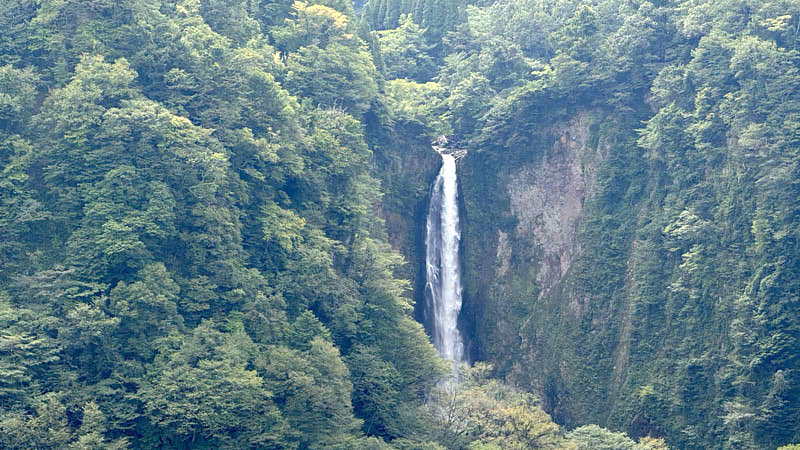 Stunning Waterfall in Rebun Island
Stunning Waterfall in Rebun Island
Japan Hiking Tips
Simple Packing List Before You Hike
First, it's essential to prepare appropriate hiking clothes in advance. This includes long-sleeved, quick-drying shirts, pants, hiking shoes, walking poles, and knee pads. If you're planning to hike up a mountain, bring a jacket as temperatures can be cooler at higher altitudes.
Next, pack items suited to the weather conditions. For hot weather, sunglasses, gloves, a hat, and sunscreen are essential. Also, bring rain gear or a raincoat to be prepared for sudden rain.
Be sure to bring enough food and water as well. On some trails, you may not find convenience stores, so having plenty of snacks and water in your hand can give you an energy boost when you need it most.
Finally, pack a small medical kit in case of minor injuries. Band-aids and blister pads can prevent chafing, and it's also a good idea to have cold medicine and stomach medication on hand, just in case.
Prepare Some Small Changes
Most rest stops along the trail do not accept credit cards and only take cash, so it's advisable to bring enough with you. Additionally, some public restrooms may require small coins for use, so having some change on hand is also recommended.
Hiking in Japan With Odynovo
Whether it is the sacred Kumano Kodo, the mysterious Yaku-Shima Island, the enchanting Mount Fuji, or the plant-strewn Rebun Island, you can get away from the city and experience life differently. You can breathe fresh air and relax your mind and body there. Traveling with Odynovo, you can measure the beauty of Japan with your footsteps!
Quick Question
Related Posts You May Like
What Our Clients Say
Explore the latest verified reviews of Odynovo's travel services on Tripadvisor, Google, Trustpilot, Product Review and more trusted platforms.
SUBSCRIBE TO WIN A FREE TOUR
Subscribe to our newsletter for a chance to win a free 7-day tour to India! And more insider travel news, exclusive offers, and inspiration will be sent straight to your inbox. Check our previous newsletters and get some sparks.

